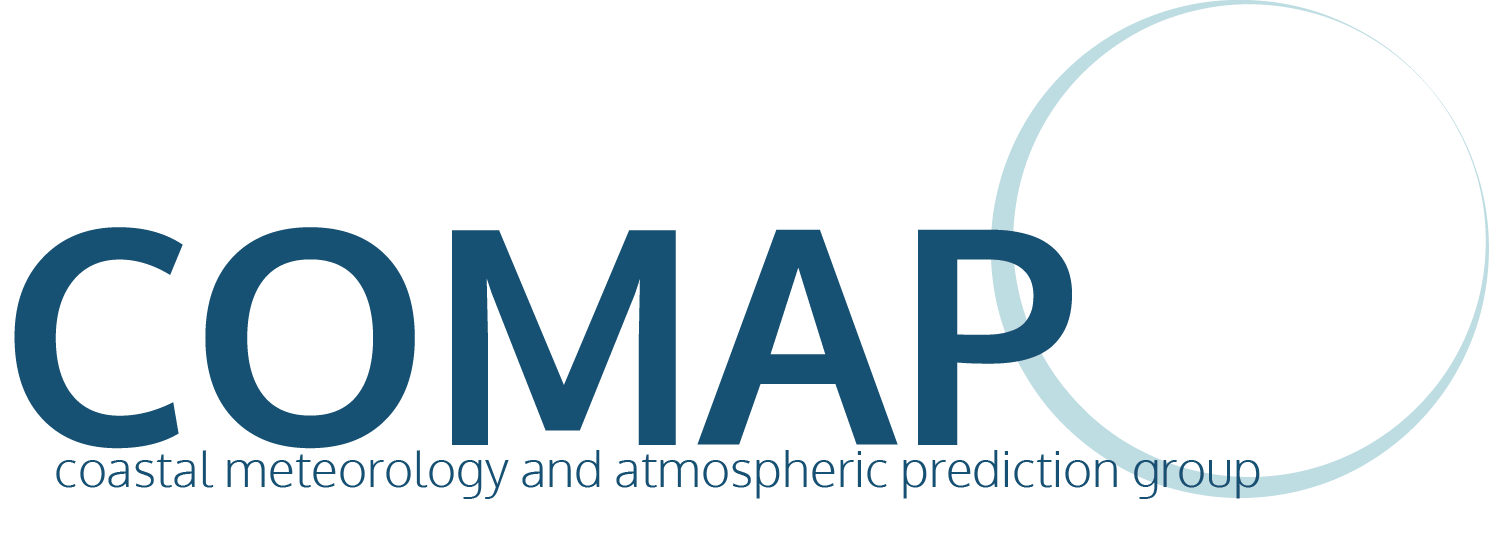Investigation of Microphysics and Precipitation for Atlantic Coast-Threatening Snowstorms

The figure above is the radar composite at 1957 UTC on January 25, 2020. The tracks of the P-3 (red) and ER-2 (blue) are overlaid on the radar composite.
-
Understanding the formation and evolution of snow bands
-
Aircraft observations
-
Phased-array radar scans
-
Additional mobile radar trucks
-
Weather balloon launches
-
Ensemble-based forecasting techniques
The coastal regions of the mid-Atlantic states lay within a region that experiences frequent and, often times, powerful coastal storms. The region encounters extra-tropical cyclones known as nor’easters during the late fall and winter months due to its location near a significant gradient in temperature between the Gulf Stream and continental air. One prominent effect these storms have is heavy snow, often combined with strong winds. Often, the predictability of these storms is compounded by the existence of snow bands, or narrow regions of heavier snowfall, within the storm. Some storms may feature a single band, other storms may have multiple smaller bands, while a few storms may not exhibit banded features at all.
An important issue this region is currently trying to understand is how the frequency, structure, and intensity of these snow bands vary with each storm. Consequently, the Investigation of Microphysics and Precipitation for Atlantic Coast-Threatening Snowstorms (IMPACTS) is a field campaign operated by NASA to better understand the structure of these snow bands. In the air, two research aircraft fly at different altitudes through snowstorms to gather data about precipitation structures and microphysical properties. The P-3 Orion samples through the clouds, while the ER-2 flies high in the stratosphere and samples with remote sensing instruments. On the ground, various teams send up weather balloons to sample the air profile, while the Stony Brook mobile radar performs high-frequency scans of precipitation.
More information about the project and the data gathered can be found at the following websites:
NASA Global Hydrometeorology Resource Center (GHRC) IMPACTS Data Archive

The figure above shows some of the instruments at Stony Brook’s weather station located at the South P Lot.

Students fill up a weather balloon at Cedar Beach and prepare to launch it after midnight on February 13, 2020.

Stony Brook’s SKYLER radar truck in operation at Cedar Beach during a snow storm on January 18, 2020.

Upton NY (KOKX) radar scan of a squall line, with a section replaced by SKYLER radar scan for comparison.
The project also utilizes Stony Brook’s own weather station, located at the South P Lot. This station features state-of-the-art ground-based instruments, including the Ka-band Scanning Polarimetric Radar (KaSPR), which is currently only one of two in the world. The instruments provide real-time surface observations, such as temperature and wind, as well as high-resolution measurements of cloud droplets and precipitation.
Skyler, a low-power X-band phased array radar, is mounted on the back of a truck and can thereby scan specific areas of interest. Its spatial and temporal resolution is significantly higher than conventional radars at NWS stations. Since Skyler scans in a volume rather than in a circle, it can be used to observe the three-dimensional structure of snow bands. Maintenance of the station and data is courtesy of Dr. Pavlos Kollias, Dr. Michael French, and their research staff at Stony Brook.
More information on the various instruments and access to real-time data can be found at https://you.stonybrook.edu/radar/data/stonybrook/
Future projects could involve:
- Creating ensemble based methods for probabilistic forecasts of snow bands. Validation of probabilistic forecast guidance.
- Comparison of snow bands in model output with sampled data.
- Data assimilation methods to improve model depiction of snow bands.
